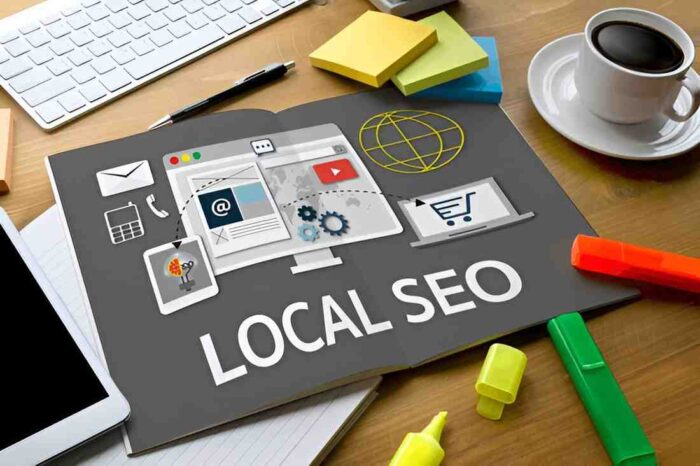As an eCommerce business owner, one of the primary challenges you face is attracting qualified leads to your website. With so many tools and technologies available today, it can be difficult to determine which lead generation software is right for your business. Over the years, I’ve tried and tested various software platforms to help generate high-quality leads for my eCommerce store. In this article, I’ll share what I’ve learned and provide an in-depth analysis of some of the best lead generation software available today.
Why Lead Generation Matters for eCommerce Websites
Before diving into the tools themselves, it’s important to understand why lead generation is crucial for eCommerce websites. The primary goal of any eCommerce store is to convert visitors into paying customers. However, not every visitor who lands on your website is ready to buy immediately. This is where lead generation comes in. By capturing potential customers’ information, you can nurture these leads and guide them through the buyer’s journey until they’re ready to make a purchase.
Lead generation is a continuous process that involves engaging visitors with valuable content, personalized offers, and streamlined communication. By using the right lead generation tools, you can efficiently collect data from prospects and nurture them into loyal customers.
Top Lead Generation Software for eCommerce Websites
In this section, I will walk you through some of the most popular and effective lead generation software platforms that can enhance your eCommerce efforts. I’ll compare them across various parameters such as features, ease of use, pricing, and integrations. This comparison will help you choose the right tool for your unique business needs.
1. OptinMonster
OptinMonster is one of the most widely recognized lead generation tools in the eCommerce industry. I’ve used it for various campaigns, and here’s what I’ve found.
Features:
- Drag-and-drop builder for creating pop-ups, slide-ins, and other opt-in forms.
- Exit-intent technology to capture abandoning visitors.
- A/B testing for optimizing lead capture forms.
- Detailed analytics to track performance.
Pros:
- Easy to use for beginners.
- High level of customization for form designs.
- Robust targeting and segmentation features.
Cons:
- Can be overwhelming due to the number of customization options.
- The most useful features are only available in higher-tier plans.
Pricing:
OptinMonster offers a tiered pricing model starting at $16 per month, with more advanced features available in higher plans.
2. HubSpot
HubSpot is known for its all-in-one marketing platform, and its lead generation tools are just as impressive. For those running an eCommerce website, HubSpot offers many ways to collect leads and automate the process.
Features:
- Email marketing and marketing automation.
- CRM integration for seamless lead tracking.
- Landing page builder for creating custom lead generation pages.
- Live chat and chatbot for real-time lead capture.
Pros:
- Strong CRM integration that allows you to manage leads effectively.
- Free version available with essential features.
- Advanced analytics to track lead behavior.
Cons:
- Steep learning curve for beginners.
- Higher costs as your business scales.
Pricing:
HubSpot offers a free plan, but for full features, paid plans start at $45 per month.
3. Sleeknote
Sleeknote is a lead generation tool specifically designed for eCommerce websites, making it an excellent choice for businesses looking to grow their customer base. I’ve found it to be a user-friendly and effective option for engaging visitors.
Features:
- Exit-intent pop-ups.
- Form builder with templates designed for eCommerce.
- Targeting options to personalize the lead capture experience.
- Detailed reporting on form performance.
Pros:
- Easy to set up and use.
- Strong focus on eCommerce-specific lead generation strategies.
- Great customer support.
Cons:
- Limited integrations compared to other platforms.
- May not be as feature-rich as other tools for larger businesses.
Pricing:
Sleeknote offers a free trial, and paid plans start at $59 per month.
4. Pipedrive
Pipedrive is another tool I’ve used to manage lead generation effectively. While it’s primarily a sales CRM, its features make it an excellent option for capturing and managing leads from your eCommerce website.
Features:
- Lead and deal management.
- Visual sales pipeline.
- Email integration and tracking.
- Advanced reporting tools.
Pros:
- Excellent for managing sales leads through the pipeline.
- Clean and intuitive user interface.
- Strong email marketing integration.
Cons:
- Lacks advanced automation features available in other tools.
- Not specifically designed for eCommerce lead generation.
Pricing:
Pipedrive starts at $15 per month for the basic plan, with higher-tier plans offering more advanced features.
5. Drift
Drift is an innovative lead generation tool that focuses on real-time conversations. It uses live chat and bots to capture leads on your eCommerce website. I’ve used Drift to create personalized conversations with visitors, and it’s been a game-changer.
Features:
- Live chat and chatbot functionality.
- Automated lead qualification.
- Real-time notifications to instantly engage with visitors.
- Integrates with your CRM for seamless lead management.
Pros:
- Great for engaging visitors in real-time.
- Highly effective for B2B lead generation as well.
- Customizable chatbot workflows.
Cons:
- The pricing may be prohibitive for small businesses.
- Can be a bit too complex for basic lead generation needs.
Pricing:
Drift’s pricing starts at $50 per month, with advanced features available in higher-tier plans.
6. Sumo
Sumo offers a suite of lead generation tools that focus on growing your email list and engaging visitors. I’ve used Sumo for capturing leads through pop-ups and welcome mats.
Features:
- Email capture forms.
- Welcome mats and scroll boxes.
- Social sharing buttons to increase brand exposure.
- Integrates with major email marketing platforms.
Pros:
- Easy to use, even for beginners.
- Offers multiple ways to capture leads.
- Free version available.
Cons:
- Limited customization options in the free version.
- Some features may require a paid plan.
Pricing:
Sumo offers a free plan, with paid plans starting at $39 per month.
Comparison Table: Lead Generation Software for eCommerce Websites
| Feature/Software | OptinMonster | HubSpot | Sleeknote | Pipedrive | Drift | Sumo |
|---|---|---|---|---|---|---|
| Lead Capture Forms | Yes | Yes | Yes | Yes | Yes | Yes |
| Exit-Intent Pop-Ups | Yes | No | Yes | No | Yes | Yes |
| CRM Integration | No | Yes | No | Yes | Yes | No |
| Live Chat | No | Yes | No | No | Yes | No |
| Email Automation | Yes | Yes | No | Yes | Yes | Yes |
| A/B Testing | Yes | Yes | No | Yes | No | Yes |
| Free Trial | Yes | Yes | Yes | No | Yes | Yes |
| Pricing | $16/month | $45/month | $59/month | $15/month | $50/month | Free (Basic) |
Conclusion: Which Lead Generation Software Is Best for Your eCommerce Website?
Choosing the right lead generation software for your eCommerce website depends on several factors, such as your business size, budget, and specific needs. If you’re just starting out and looking for an easy-to-use platform with a free version, Sumo might be a good option. On the other hand, if you’re looking for a comprehensive solution with CRM integration and advanced automation, HubSpot or OptinMonster could be the right choice.
For those who prioritize real-time engagement, Drift offers a unique approach with its live chat and chatbot functionality. If you’re focused on targeting visitors at the right moment with exit-intent pop-ups and other forms, Sleeknote is worth considering.
Ultimately, the right tool for your eCommerce website will align with your goals, help you capture leads effectively, and enable you to nurture those leads until they convert into customers. I recommend taking advantage of free trials or demo versions to test out these tools and determine which one works best for your business.





